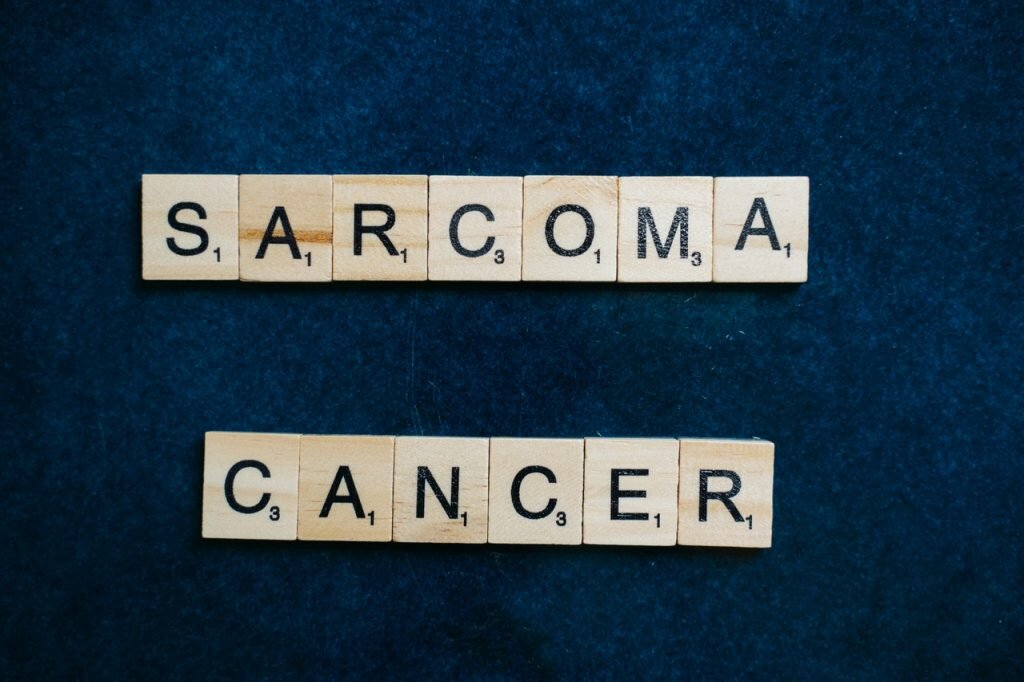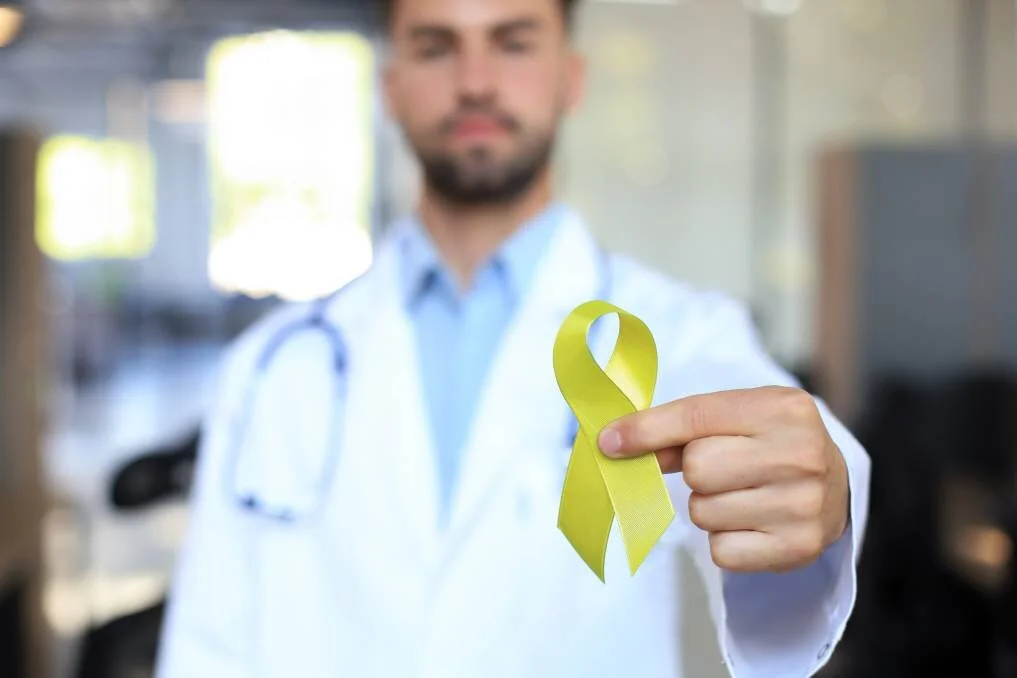Unless you or someone you know has been diagnosed with it, odds are you probably don’t know too much about sarcoma. It’s an extremely rare type of cancer, according to the American Cancer Society, accounting for just one percent of all adult cancers and 15 percent of all pediatric cancers.
What you should know about sarcoma
Sarcomas can be hard to find and complex to treat. Dr. E. Ramsay Camp, professor and chief of the Division of Surgical Oncology at Baylor College of Medicine, explains how they are diagnosed and why a team approach to treatment is essential in the following Q&A.
MSK Experts Develop New Guidelines to Treat Rare Form of Sarcoma: Epithelioid Hemangioendothelioma
Originally appeared on MSKCC.org
Memorial Sloan Kettering has been a leader in the care of sarcoma patients for decades, treating about 70% of the cases in the New York City tri-state area. A disease largely affecting young people, sarcoma is a rare cancer of the bones and soft tissues with more than 50 subtypes. The Sarcoma Center at Memorial Sloan Kettering studies both rare and ultrarare forms of the disease, focusing on its molecular changes.
In June 2021, two of the Sarcoma Center’s leaders — MSK medical oncologist William Tap and pathologist Cristina Antonescu — were co-authors of a paper published in ESMO Open that established guidelines for caring for patients with an especially rare sarcoma called epithelioid hemangioendothelioma (EHE), which is a kind of tumor in the blood vessels.
“EHE is a very complicated disease,” says Dr. Tap, Chief of MSK’s Sarcoma Medical Oncology Service. “Some people can have very slow-growing disease and can go for long periods without treatment. Or they may do very well with surgery to remove the tumor and nothing else. But for others, it can be very aggressive and dangerous.” MSK researchers are trying to learn why the disease behaves differently in different people.
Teaming Up to Improve Patient Care
Because there are no drugs approved specifically for EHE, the European Society for Medical Oncology (ESMO) convened an international team to establish standards for the best way to treat the disease. The scientists seek to predict which patients are likely to do well with less-aggressive treatment and which need more-aggressive treatment. They also want to develop clinical trials for EHE and set standard treatment paradigms.
Learning more about EHE is an ongoing mission of MSK’s sarcoma research. Thanks to funding from the EHE Foundation, researchers at MSK are strengthening the EHE research program. The effort is led by Dr. Tap and Dr. Antonescu, Director for Bone and Soft Tissue Pathology. Medical oncologist Evan Rosenbaum is also involved.
The goals include:
creating an EHE clinical database that includes genomic information as well as samples of tissue and blood
instituting a multidisciplinary patient care team focused on diagnosis and treatment
launching a comprehensive research program, including various genetic projects
developing immunotherapy approaches
developing lab models of EHE and using them to study potential new drugs
developing a central repository of both data and tissue samples that can be shared with other researchers studying EHE
A major objective is bringing EHE patients into clinical trials for a broader range of sarcomas. “Clinical trials allow us to offer people with EHE cutting-edge therapies that are aligned with the biology and nuances of their disease,” Dr. Tap says. “They also allow us to collect prospective data about EHE and the best ways to treat people who have it.”
Dr. Antonescu is also taking a deeper look at the different variations of EHE disease.
MSK’s Leadership in Sarcoma Research
MSK’s expertise in treating sarcomas has been recognized with a Specialized Programs of Research Excellence (SPORE) grant from the National Institutes of Health. MSK is the only institution in the country to receive a SPORE specifically for sarcoma. Surgeon-scientist Samuel Singer, who heads the Sarcoma Center and is the SPORE grant principal investigator, leads many research efforts across the range of sarcoma types.
Philanthropy has driven advances in MSK’s sarcoma research for many years, including longtime support from the Kristen Ann Carr Fund.
“The purpose of the Sarcoma Center is to really organize our research and patient care efforts,” Dr. Tap says. “EHE is just one example of a disease that requires us to work together across multiple areas of specialization and collaboratively among international institutions. Because this disease largely affects younger people, there is also an important role for our Adolescent and Young Adult Program to play in caring for these patients.”
Key Takeaways
MSK’s Sarcoma Center is a nationally recognized leader, and MSK treats the majority of sarcoma cases in the New York metropolitan region.
MSK researchers are developing new guidelines to treat a rare sarcoma, EHE.
Caring for sarcoma patients, who are typically young, requires experts from many disciplines and the MSK Adolescent and Young Adult Program.
Sarcoma Awareness month: Family carers need more support
Each year more than 1800 Australians are diagnosed with sarcoma. Sarcoma is an aggressive cancer affecting children and young adults, as well as older generations, with the disease proving fatal in one out of every three cases within five years. But despite its gravity, support for families and carers is sorely lacking.
Disability Pride Month
Originally appeared on Limbitless Sunshine
July is Disability Pride Month as well as Sarcoma Awareness Month. Both heavily intertwined in my life in such a way, that one caused the other. I still remember the first time I realized that I had a disability. It wasn't when I woke up from surgery in the hospital with one less limb, it was actually later on while filling out medical leave paperwork. I didn't linger on it much. Just checked the box, had a fleeting thought about remembering to keep this in mind when booking a flight or a hotel room. That's it.
There is this assumption in society when you are disabled that your life must be terrible. How could you possibly be happy in a wheelchair? If you're missing an arm, can you even care for yourself? Being born without sight is so sad right? Here is the thing — disability or not — you can't ever presume to know how happy someone is or their capacity in which they can care for themselves. A First glance will never tell you how full someone's life is. Simply put, having a disability means that you do some things differently. Perhaps with assistance from a person, a device, or a medication. What it does not mean, is that you are incapable of joy and love and success. I, myself live quite the full, beautiful life, despite the challenges that my disability poses.
What exactly is disability pride? When you are not ashamed of your disability, and are comfortable enough in your skin to be proud of who you are and advocate for others like you. Glam out your wheelchair, show off your prosthesis, decorate your cane and speak up when your disability requires accommodations. That being said, not everyone with a disability feels pride. Years of discrimination and a lack of rights in addition to stares and judgement from strangers can make anyone see their difference as something negative. Some deal with chronic pain and their support system doesn't quite know how to help.
What do people with a disability generally want? It's pretty basic really. To be treated with equality and respect, to have our accommodations understood as modifications that help us complete normal life tasks and live more comfortably. To not have our wheelchairs broken by airlines and be able to access all the same places you access. That's all. We are humans and want to be treated as such. I leave you with this thought - the next time you go somewhere that is not accessible and have the opportunity to leave feedback, speak up for us. The next time you meet someone with a disability speak directly to us, not with your eyes on our mobility device. The next time you get the opportunity to vote for our rights, vote for us.
Sincerely,
Those of us who deserve the same rights you have.
Sarcoma survivor details her journey of fighting the disease
Every month FOX 25 brings awareness to different types of cancers in our FOX 25 Fights Cancer series. This month, we're highlighting Sarcomas. In 2010, life was normal for Barbara Thornton of Oklahoma City. But in November that year, Barbara noticed something odd. It was an egg-shaped lump on her right collarbone.
Dear Former Self
Originally appeared on Limbitless Sunshine
I don't have many regrets. I could have studied a little harder in school and mended some friendships sooner, but looking through old photos over the last week has stirred up some emotions about the person I once was. Maybe it was how clearly I could spot my tumor on the side of my right knee, or maybe it was that I still had a right leg. I think we all wish we could tell our former selves a thing or two. Not enough to change our path, but just enough to help us get through the lowest points with a bit more hope.
We all lose little pieces of ourselves when tragedy hits, and if we're lucky, we find a way to grow back some of what we lost in the form of strength. The breakups, the lost jobs, the setbacks, don't define us — they tell a story of what we've been through and so, they teach us lessons. What would you tell yourself 5, 10, 20 years ago? I'll go first.
Dear former self,
I know you think you have been through it all, but there is still so much life in front of you, and so there is some sadness and fight to come. Hug your parents tight, tell them you love them way more often than necessary, and please know that cancer will not defeat your spirit. Rest easier knowing that you will get past it and will be able to share your story with other survivors and supporters. Look at each birthday as the gift that it is — another trip around the sun and more wisdom with which to be your own advocate and know your worth. Soak up the small, beautiful moments you once glossed over so carelessly. You only get so many. You will lose a leg, but you will gain a super fancy robot leg that helps you get around and is covered in gold glitter. Rock it. I know you feel alone now, trying to find anyone who has even heard of Parosteal Osteosarcoma. You won't feel alone for long. There are others out there and they will be a part of a large support system and community that keep you going and give you a reason to write down your thoughts each week. Count your blessings. You have many more than what can be seen on the surface. I know you feel sick to your stomach with worry now, but this too shall pass. KEEP GOING and KEEP FIGHTING. Someday, your words will mean something to someone halfway across the world who has almost given up and all that you've been through to get here will have been worth it, if only to help just one person.
Belfast model who lost leg to cancer becomes first Miss Northern Ireland finalist with disability or difference
A Belfast model is preparing to shine on stage as she becomes the first person with a difference or disability to become a Miss Northern Ireland finalist. 25-year-old Bernadette Hagans is ready to inspire the next generation of girls across the world as she has never let losing her leg to cancer stop her from living her life.
‘The World Is Now Pulling for You’: Dwayne ‘The Rock’ Johnson Sends an Inspiring Video to a 10-Year-Old Girl Battling Ewing Sarcoma
10-year-old Luna Perrone was diagnosed with a type of bone cancer called Ewing sarcoma just three weeks before turning 10. Perrone is currently undergoing chemotherapy, and has received lots of messages of love and encouragement along the way. Even “The Rock” sent the superfan, who calls herself “The Pebble,” an encouraging video message via Instagram.







